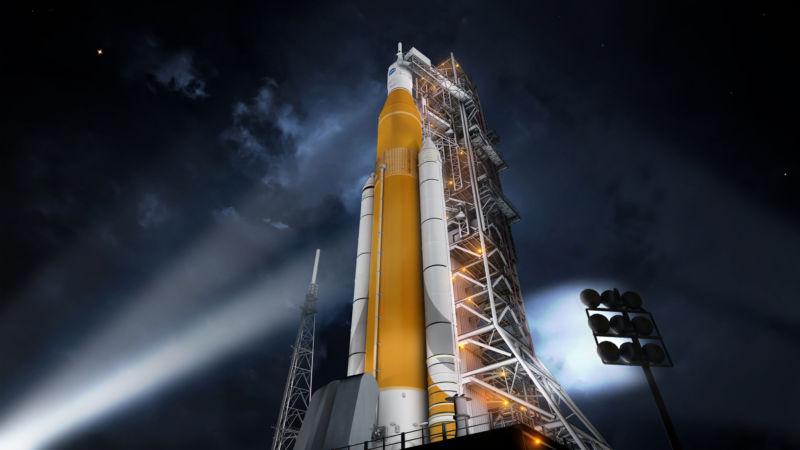NASA has begun a study of the SLS rocket’s affordability

NASA is conducting an internal review of the Space Launch System rocket’s affordability, two sources have told Ars Technica.
Concerned by the program’s outsized costs, the NASA transition team appointed by President Joe Biden initiated the study. The analysis is being led by Paul McConnaughey, a former deputy center director of NASA’s Marshall Space Flight Center in Huntsville, as well as its chief engineer.
The SLS rocket program has been managed by Marshall for more than a decade. Critics have derided it as a “jobs program” intended to retain employees at key centers, such as Alabama-based Marshall, as well as those at primary contractors such as Boeing, Northrop Grumman, and Aerojet Rocketdyne. Such criticism has been bolstered by frequent schedule delays—the SLS was originally due to launch in 2016, and the rocket will now launch no sooner than 2022—as well as cost overruns.
For now, costs seem to be the driving factor behind the White House’s concerns. With a maximum cadence of one launch per year, the SLS rocket is expected to cost more than $2 billion per flight, and that is on top of the $20 billion NASA has already spent developing the vehicle and its ground systems. Some of the incoming officials do not believe the Artemis Moon Program is sustainable with such launch costs.
Cost concerns
McConnaughey is leading the study for Kathy Lueders, NASA’s chief of human spaceflight. Even before the study’s initiation, McConnaughey had been pushing for the SLS program to become more cost-effective. One goal of this analysis is to find ways for the large NASA rocket to compete effectively with privately developed rockets as part of the agency’s Artemis Moon program.
For example, although SpaceX’s Falcon Heavy rocket does not have as much lift capacity as the SLS rocket, it has the advantage of being already in use and costing about one-tenth as much per flight. Blue Origin and United Launch Alliance are also developing heavy-lift rockets that are intended to deliver components of a Human Landing System to lunar orbit.
Perhaps most significantly, SpaceX is continuing a flight test campaign of its Starship Launch System, which may make its first orbital flight in the next 12 months. This is a launch vehicle that could potentially out-lift the SLS rocket, be reusable, and cost a fraction of the price. If SpaceX succeeds in getting Starship into orbit, there would be little technical justification for continuing government subsidization of the less capable SLS booster, which is expendable and costs much, much more.
Proponents of the SLS rocket are not blind to this. Some believe SpaceX will not succeed with its Starship program, and indeed myriad technical challenges remain. Others think NASA could find ways of making the SLS rocket more competitive, and that is one point of this study.
Another reason for the new analysis, however, is to assess whether NASA really needs the SLS rocket at all as part of the…
Read More: NASA has begun a study of the SLS rocket’s affordability
